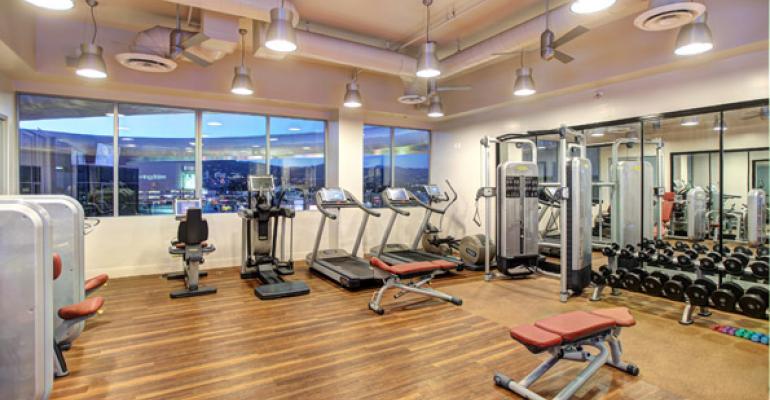There are more than 36,000 health clubs, gyms and fitness centers in the U.S., and major markets have seen growth at a rate of 2.8 percent since 2013. But what does the future of the retail fitness industry look like? Many believe, as an internet-resistant sector, the future looks bright for fitness centers and gyms. And while that may prove true, growth in the next five to 10 years may look a bit different than what we’ve witnessed in the last decade. Here are some trends to watch for:
Fewer freestanding locations: As the retail sector continues to take hits from companies downsizing or going out of business, landlords of shopping centers and regional malls with vacant junior and big-box anchor stores are looking to make a deal. Gyms and fitness centers—especially the smaller chains and boutique formats—have been able to capitalize on lower rents as landlords scramble to not only fill empty space, but also help drive traffic to other stores within their centers. As larger fitness chains look to expand their footprints, it’s not unreasonable to think that even the brands that favor a free-standing format might consider an in-line or anchor space if it means significant rent savings.
Aging customer base: Demographics could impact the number of freestanding fitness locations in the future too. As a significant percentage of the U.S. population ages and turns to fitness, rehabilitation and other wellness services to prolong and enhance quality of life, fitness centers might need to rethink their location strategies. We may begin seeing more health clubs partner with mixed-use and lifestyle real estate developments instead of traditional retail centers. In order to reach their desired customer base, traditional fitness clubs could begin opening in active adult residential communities, assisted living facilities or medical and hospital complexes.
Non-traditional gym tenants: As the baby boomer generation drives fitness trends on one end of the spectrum, millennials are influencing the future of fitness on the other. Non-traditional fitness retailers, including cross-fit, group training, yoga studios, boot camp programs and other boutique clubs, are gaining popularity with younger generations. Additionally, community fitness programs—such as those preparing their customers for marathons, triathlons, Tough Mudder events and other “fun runs”—may be driving future growth in the industry. And the market is already seeing non-traditional fitness tenants like swim centers, trampoline parks and indoor skydiving centers open locations across the country and draw a big crowd.
Hybrid establishments: Fitness centers and health clubs have regularly offered food items such as smoothies, protein bars and other snacks from their cafés and juice bars. But we haven’t yet seen a full integration of a fitness retailer with a restaurant or casual dining chain. As millennials put more and more emphasis on nutritional health and clean eating, we may begin seeing hybrid stores that offer a fun and challenging workout while providing energizing and nutritious meals. A hybrid concept, especially for the large national and regional fitness chains, might help them remain relevant with the younger generations who are willing to pay more for specialized programs and custom classes. And if meal planning services, dietary advice and lunch were available on-site as well, it would provide a one-stop shopping experience for the busy customer.
Technology: In today’s world, technology integrates with everything we do—and fitness is no exception. Millennials especially have embraced wearable technology such as Fitbits and Apple watches that can help track fitness and health goals. In the coming years, look for health clubs and gyms to help consumers interact seamlessly with their services by using technology. Having your personal trainer or spin class instructor able to access your daily activity log and provide remote coaching and motivation could be the future of fitness. Older generations too will benefit from these new technologies, possibly allowing doctors to monitor the health and activity of their patients in real time, while working closely with fitness instructors to develop the right fitness and wellness plans.
Whether it takes one or 10 years for these trends to materialize, there is no denying that fitness continues to be a priority for consumers across the U.S., and as the fitness sector’s landscape shifts due to technological enhancements or the merging and hybridization of retail concepts, real estate investors are well positioned to capitalize on this growing industry.
Lanie Beck serves as director of research with the Stan Johnson Co.




